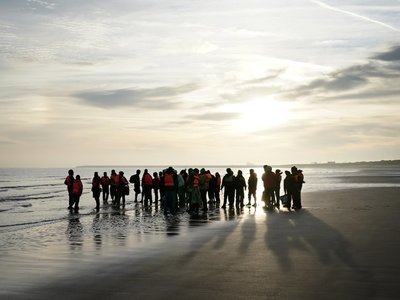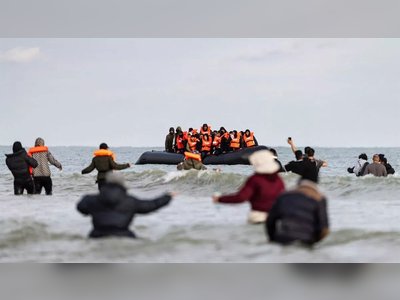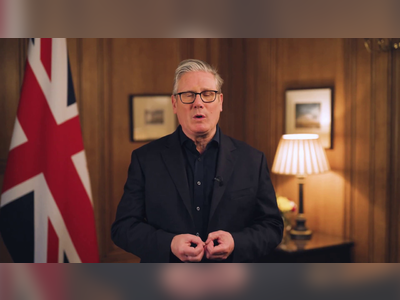
COVID-19 Vaccines in Central America
I’ve wanted to stay away from this topic as much as possible in recent months, because it’s, well, controversial. It shouldn’t be, but it is. The topic of vaccines stirs up strong feelings, no matter what side of the debate you find yourself on.
But now COVID-19 vaccinations have started, it’s time to talk about them here in Central America.
The COVID pandemic has ravaged this region. We’ve seen our economies disappear with restrictions, border closures, and massive job losses. Finding a way to end this nightmare is critical.
I would argue that finding a way to end this is more critical in developing regions like Central America. We have no social security blanket to catch people in. All we can do is lock down and kill our economies or open up and risk the lives of the vulnerable. We’re caught between the hardest rock and the rockiest hard place.
So where is Central America when it comes to COVID vaccines? We know compared to North America and Europe we’re near the bottom of the pile. But how far down are we? Let’s take a look.
Panama
Panama has been the most transparent country in Central America about COVID vaccines so we’ll start there.
It’s buying 4 million doses of the Pfizer/BioNTech vaccine. That will vaccinate two million Panamanians, almost half the country. The cost of these vaccines is $48 million.
The first 450 thousand doses of the vaccine will arrive between January and March 2021. Evette Berrio, the deputy health minister said that bedridden people over 60, nursing home residents, health workers, and security officials will be first in line to receive the vaccination.
Panama is also ordering almost 1.1 million doses of the Oxford University/AstraZeneca vaccine “for older adults” and 300 thousand doses of the Johnsen and Johnsen vaccine.
The Johnsen and Johnsen vaccine is earmarked for indigenous and other hard-to-reach communities. This vaccine can survive with regular refrigeration and (should) only need one dose.
Panama will also receive another 1.1 million vaccine doses from the World Health Organization-sponsored COVAX initiative. COVAX is a group initiative between 179 countries and vaccine manufacturers to ensure fair distribution of vaccine throughout the developing world. The idea is to stop rich countries as much as it can from hogging all the available vaccine.
Costa Rica
In 2021, Costa Rica will receive enough COVID vaccines to take care of 3 million people, around 60% of the population.
Costa Rica already indicated that once the US gave the Pfizer/BioNTech vaccine the all-clear, they would do the same. Now that’s happened, Costa Rica expects the first batch of its 3 million Pfizer/BioNTech doses to arrive in the first quarter of 2021.
The first people to get vaccinated in Costa Rica will be health sector workers, the elderly, and others at high risk or serious illness or death from COVID-19.
Aside from the Pfizer/BioNTech deal, Costa Rica has also agreed to buy a million doses of the Oxford University/AstraZeneca vaccine and two million doses from the COVAX initiative.
Nicaragua
As with everything else COVID-related this year, Nicaragua has been cagey.
The government has said it’s talking to the Pan-American Health Organization about the progress of “four different vaccines” but hasn’t specified which ones or when any of them would be available.
Reading between the lines, the Nicaraguan press today has been talking about the progress of the Russian Sputnik V vaccine. Venezuela has ordered 10 million doses of this vaccine, so it wouldn’t be a stretch of the imagination to see Nicaragua follow suit in some way. A bizarre story earlier this year came out about Nicaragua wanting to produce the Russian vaccine themselves. This was soon shot down by experts as impossible.
Earlier this month, Nicaraguan finance minister announced it had $107 million from Inter-American Development Bank (IDB) and the Central American Bank for Economic Integration (CABEI) to buy vaccines, although CABEI denied it had even spoken to Nicaragua about this. So who knows?
Nicaragua is eligible for free vaccine from COVAX initiative, so more than likely, this is what it’ll get, plus something from the Russians and (maybe) Cubans.
Honduras
The IHSS (the Honduran health system) has ordered 1.4 million doses of the Oxford University/AstraZeneca vaccine for delivery at the end of April 2021. This will vaccinate 700,000 Hondurans, all who must be affiliated with the IHSS. The government has no plan yet for Hondurans not affiliated with the IHSS.
The contract with Oxford University/AstraZeneca says that the first 156,000 doses will arrive in Honduras on April 21, with the same amount on May 21. It’s expected that all 1.4 million doses will be in Honduras by the end of August.
Honduras is also one of the countries designated by the WHO to receive COVID vaccine free of charge from the COVAX initiative. The government says that it will receive enough vaccine from the COVAX initiative to cover 20% of its needs. The rest will come from a coalition between the IHSS and the private sector.
El Salvador
El Salvador has agreed to buy 2 million doses of the Oxford University/AstraZeneca vaccine for delivery in the first half of 2021.
President Bukele promises “free, universal, and voluntary” vaccinations for all Salvadorans, saying he’s also talking to three other vaccine manufacturers.
El Salvador is also on the list of countries eligible to receive free vaccines through the COVAX initiative.
Across the board, El Salvador expects to receive some nine million doses of COVID vaccines in 2021 through a mixture of COVAX donations and buying power.
Guatemala
Guatemala is signed up to the COVAX initiative, and this is where it’ll be getting its first doses of vaccine from. Unlike El Salvador, Nicaragua, and Honduras, Guatemala is not on the list to get free vaccine from COVAX. It’ll have to pay, like Costa Rica, Panama, and Belize. So far, it’s put in $10.7 million, which is 15% of the advance to the COVAX initiative.
Due to COVAX vaccines coming from different manufacturers, Guatemala can’t pinpoint an arrival date.
“It could be in May or it could be in June. We would like it not to go further,” said Health Minister Amelia Flores last week.
Whatever vaccines Guatemala receives through COVAX won’t be enough for the entire population. Guatemala expects to receive some 6.7 million doses through COVAX, which will vaccinate about 3.37 million people, 20% of the population.
The government says it hopes to reach direct agreements with the pharmaceutical companies to buy more vaccines and cover more people. There are no details of who they’re speaking to about this.
Belize
Belize has not announced any deals with the pharmaceutical companies to buy vaccine. It’s probably safe to say that the Pfizer and Moderna vaccines won’t happen, as Belize doesn’t have the ultra-cold storage facilities they need.
That makes the Oxford University/AstraZeneca or the Johnsen and Johnsen vaccines the best bet, should Belize buy direct.
It’s more likely Belize will go through the COVAX program. It’s not eligible for free vaccines from COVAX, but it’s signed up to the initiative through the Caribbean Public Health Agency (CARPHA).
CARPHA has helped Belize with some of its down payment to the COVAX initiative, although exact percentages are not available.
I wish there was more info out there about exactly which countries are getting which vaccine and when.
But because only the Pfizer/BioNtech vaccine is available right now, and because so many countries are relying solely on COVAX, it’s difficult to say.
One thing’s for sure, though. Good old inequality. It’s only been almost a week since vaccinations started, and already it’s clear that rich countries want to hoard vaccine. It’s like those selfish shoppers stocking up on toilet paper at the beginning of this thing, only on a far larger scale.
Rich nations represent 14% of the world’s population, but have bought up 53% of the most promising vaccines. For example, according to the People’s Vaccine Alliance, Canada has bought enough vaccine to protect each Canadian five times. That’s obscene.
As stated, Central America, and other developing regions are near the bottom of the pile. This is why the COVAX program is so worthwhile, even if it doesn’t manage to vaccinate everyone it needs to.
Belize, Nicaragua, Guatemala, and Honduras look particularly at risk of being left behind in Central America, even with COVAX. We might find these countries getting a Russian, Chinese, or even a Cuban vaccine to bail them out.
There are considerable geopolitical ramifications of this happening. But more, on a moral scale, it’s something the west – paying their citizens to stay in – should be ashamed of.
James Dyde is the editor of centralamerica.com. He lives in Escazu, Costa Rica.











